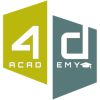Kursusmål
This course is aimed at you, who wishes to use SQL in a larger context, or just want to know much more about the SQL language. By participating in this experienced SQL course, you will achieve a solid knowledge of the possibilities when using Transact-SQL.
You will learn how to create new tables called temporary tables and views with SQL, making your computing process much easier. You will also learn how to divide your SQL code into smaller and more manageable chunks.
Many of the operators you’ll learn in this course are relevant, e.g. if you want to use your SQL from other tools. In short; to extract data to meet your complicated needs.
On the course, you will learn to
- Create and alter tables and constraints
- Create and work with temporary tables
- Create and alter views
- Handle datasets/tables in different manners
- Work with Common Table Expressions (CTE) and windowing functions
In the section, ”Course Details” below, you will find more details about the content of this SQL course.
Deltagere
We strongly recommend that you participate in our basic SQL course before entering this course, or in other ways have achieved the expected basic knowledge about T-SQL and relational databases.
This SQL course is a part of 4D's unique collection of English conducted courses in the Business Intelligence course category.
Kursusmateriale
During the course
- Teaching by the most experienced instructor team in our cosy and fully updated classrooms located in the centre of Copenhagen.
- A course that consists of a both theory and practical exercises. We know the importance of having practical exercises and hands-on is always in focus during the courses.
- A course material you can use as an encyclopaedia after the course and downloads of course exercises.
- All meals, which includes breakfast, fresh coffee, tea, fruit, soft drinks, lunch at an Italian restaurant, cake, candy and off cause Wi-Fi to your devices.
- A course diploma as a proof of your new skills.
After the course
Access to our free hotline service, which means that you up to a year after the completing of the course can contact us if you have questions regarding subjects from the course.
We have a unique satisfaction guarantee in order to ensure you the complete benefit from the course
Kursusindhold
The central parts (Clauses) of an SQL-sentence are repeated, amongst other to introduce you to the course database.
The following will be covered:
- SELECT
- FROM, JOIN
- WHERE
- GROUP BY, HAVING
- ORDER BY
The purpose with this module is to introduce you to tables, columns and datatypes. Additionally, you learn how to edit data.
The following will be covered:
- Create and delete tables
- Datatypes
- Insert, update and delete data
In this module you’ll learn how to create temporary tables, insert data into them and then use them.
The following will be covered:
- Creating and using temporary tables
- INSERT INTO - SELECT and SELECT - INTO
You will learn how to use functions that moves between rows in a dataset e.g. numbering rows based on values in a certain column.
The following functions will be covered:
- ROW_NUMBER, RANK, NTILE
- OFFSET-FETCH, FIRST-LAST VALUE, LAG and LEAD
In situations where joining two tables is difficult, you learn how to use the APPLY-operator instead.
The following will be covered:
- CROSS APPLY
- OUTER APPLY
In this module you’ll learn to take advantage of the select-from-select concept, and when that can be advantageous.
The following will be covered:
- Use column aliases
- Compress dataset before demanding tasks
- Reuse ranked rows
In this module you’ll learn about the different parts of a CTE, its advantages and how to use it. Additionally, you’ll learn how to write and use recursions.
The following will be covered:
- The parts in a CTE
- CTE with multiple datasets
- Recursive CTE’s
The aim of this module is to introduce you to VIEWS. You’ll learn the advantages of Views and how to create- and use them.
The following will be covered:
- Advantages of using Views
- Creation and usage of Views
Hvad siger vores kunder om os?
Siden 1990 har 4D Academy hjulpet virksomheder og specialister med at omsætte viden til målbare resultater. Vores kursister belønner os med en gennemsnitlig rating på 4,8 ud af 5 på Trustpilot, Google og Facebook, og det gør os stolte.
Se hvorfor både nye og erfarne fagfolk vælger os, når de vil løfte deres kompetencer.
Hold dig opdateret med vores nyhedsbrev
Her bor vi
1201 København K
1201 København K
Tirsdag: 08.00 - 16.00
Onsdag: 08.00 - 16.00
Torsdag: 08.00 - 16.00
Fredag: 08.00 - 16.00





